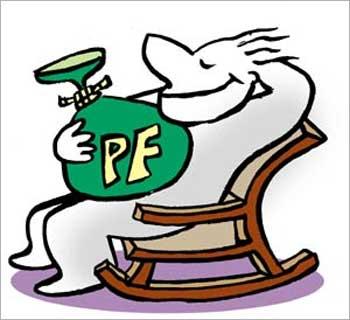 The Employee Provident Fund (EPF) contribution should no longer be restricted to 12 per cent of basic and dearness allowance (DA), according to a recent circular. Instead should be calculated on all allowances barring a few like HRA, overtime (which, I don't think any private companies pay for any longer) and some incentives.
The Employee Provident Fund (EPF) contribution should no longer be restricted to 12 per cent of basic and dearness allowance (DA), according to a recent circular. Instead should be calculated on all allowances barring a few like HRA, overtime (which, I don't think any private companies pay for any longer) and some incentives.
This would mean that employees will need to contribute 12 per cent of their total pay and the employer need to match that contribution.
Result: Employees will take a hit on their net pay. Since most employers structure salaries based on the cost-to-company or CTC (including employer contribution to EPF) they will adjust the other allowances downwards resulting in a dual hit to the employee's take home pay.
In these inflationary times when most people struggle to stretch their incomes till the end of the month it is of little solace that this reduction is not a tax but is being deposited in their accounts which will help them post-retirement.
The EPF administration was set up in socialistic 1950s and is known to be extremely bureaucratic. Though things have improved to an extent the administration is clearly not designed with customer service in mind.
The trustees have stubbornly been refused to put even a small sum of money in the equity markets. This is reflected in the returns which have been around 8 to 8.50 per cent, just around the inflation rate (except for one year when it was increased to 9.5 per cent).
Compare this with what the New Pension System (NPS) has achieved, over a relatively short span of time, on the back of allowing investors to put up to 50 per cent of their money in equity.
The lowest 1-year return for a portfolio that invested 50 per cent in equity, 30 per cent in corporate bonds and 20 per cent in government securities has been 14.08 per cent. Even if you give equity and corporate bonds a miss, the lowest 1-year return on just government securities has been 13.14 per cent. (Source: Central Record keeping Agency for NPS)
Besides NPS is a centrally computerised system, which allows the investor to appoint a fund manager and change them if he/she so desires. The account number remains the same and the investor can monitor the value of his investments on a day-to-day basis.
It is therefore, not difficult to understand why the salaried class is not enthusiastic about the higher EPF deduction. But there is a silver lining to this. The EPF circular is a great opportunity to re-jig your retirement planning without losing either on take home pay or on retirement savings.
If your salary (as per the expanded definition) is higher than Rs 6,500 a month you can have the EPF deduction restricted to Rs 780 per month (12 per cent of Rs 6,500 ) and the employer will match this contribution.
Whatever you save in your contribution by following new route, it should be contributed to the NPS and whatever the employer saves by way of his contribution to EPF can also be contributed in your NPS account (subject to a maximum of 10 per cent of the basic plus DA).
This will ensure that your retirement savings don't go down but you shift them to a modern alternative that is likely to provide higher returns and is also administratively far more convenient.
If you are joining a new job with salary in excess of Rs 6,500, you have the option of giving EPF a complete miss and use the NPS route.
Use the EPF circular as a great opportunity to get higher post-tax returns on your retirement savings without compromising on your take home pay.
The writer is CEO, Apnapaisa.com.










